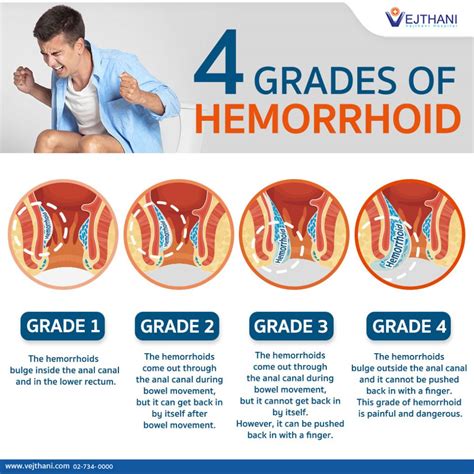Intro
Discover effective female hemorrhoid surgery options, including minimally invasive procedures, laser treatment, and stapled hemorrhoidopexy, to alleviate painful symptoms and improve quality of life.
Hemorrhoids are a common health issue affecting millions of people worldwide, with women being particularly susceptible during pregnancy and after childbirth. The discomfort, pain, and inconvenience caused by hemorrhoids can significantly impact daily life, making it essential to explore effective treatment options. For women, especially, understanding the various surgical procedures available can help alleviate symptoms and improve overall well-being.
The prevalence of hemorrhoids among women, particularly during significant life events such as pregnancy, underscores the need for comprehensive care and treatment options. Hemorrhoids can range from mildly uncomfortable to severely painful, and while many cases can be managed through lifestyle changes and non-surgical treatments, some may require surgical intervention. The decision to undergo surgery is often made after other treatments have been tried, and the symptoms persist or worsen.
Understanding the different types of hemorrhoids—internal and external—is crucial in determining the most appropriate treatment approach. Internal hemorrhoids occur inside the rectum and are typically less painful, while external hemorrhoids develop under the skin around the anus and can be more painful. The choice of surgical method often depends on the type, size, and location of the hemorrhoids, as well as the patient's overall health and preferences.
Introduction to Female Hemorrhoid Surgery

Female hemorrhoid surgery encompasses a range of procedures designed to remove or reduce the size of hemorrhoids, thereby alleviating symptoms such as pain, itching, and bleeding. These surgeries can be performed under local anesthesia, spinal anesthesia, or general anesthesia, depending on the procedure and the patient's health status. The goal of surgery is not only to treat the current symptoms but also to prevent future recurrences.
Types of Hemorrhoid Surgeries for Women
The most common surgical procedures for hemorrhoids include hemorrhoidectomy, stapled hemorrhoidopexy, and hemorrhoidal artery ligation. Each procedure has its advantages and is suited for different types and severities of hemorrhoids.- Hemorrhoidectomy is a surgical procedure that involves the removal of the hemorrhoid. It is often recommended for larger hemorrhoids and can be performed on both internal and external hemorrhoids.
- Stapled Hemorrhoidopexy involves the use of a stapler to cut off the blood flow to the hemorrhoid, causing it to shrink. This method is typically used for internal hemorrhoids and is less painful than traditional hemorrhoidectomy, with a quicker recovery time.
- Hemorrhoidal Artery Ligation is a minimally invasive procedure where the arteries that supply blood to the hemorrhoid are ligated (tied off), reducing blood flow to the hemorrhoid and causing it to shrink.
Benefits of Surgical Intervention

Surgical intervention for hemorrhoids offers several benefits, especially for women who have tried other treatments without significant relief. The primary advantages include:
- Long-term Relief: Surgery can provide long-lasting relief from hemorrhoid symptoms, improving quality of life.
- Minimally Invasive Options: Many surgical procedures are minimally invasive, leading to less pain and quicker recovery times.
- Low Recurrence Rate: Surgical removal of hemorrhoids can significantly reduce the chance of recurrence compared to non-surgical treatments.
Preparing for Hemorrhoid Surgery
Preparation is key to ensuring a smooth and successful surgical experience. This includes: - **Medical Evaluation**: A thorough medical evaluation to assess overall health and determine the best surgical approach. - **Lifestyle Changes**: Implementing dietary changes, increasing fluid intake, and engaging in regular physical activity to soften stool and reduce straining during bowel movements. - **Surgical Instructions**: Following specific pre-surgical instructions provided by the healthcare provider, which may include fasting, stopping certain medications, and preparing the bowel.Risks and Complications of Hemorrhoid Surgery

As with any surgical procedure, there are potential risks and complications associated with hemorrhoid surgery. These can include:
- Pain: Post-operative pain is common but can be managed with medication.
- Bleeding: There is a risk of bleeding after surgery, which in rare cases can be severe.
- Infection: As with any surgery, there is a risk of infection, which can be treated with antibiotics.
- Urinary Retention: Some patients may experience difficulty urinating after surgery, which is usually temporary.
Recovery and Aftercare
The recovery process after hemorrhoid surgery involves several steps to ensure proper healing and minimize the risk of complications. This includes: - **Pain Management**: Following the prescribed pain management regimen to control discomfort. - **Dietary Changes**: Adhering to a high-fiber diet and staying hydrated to prevent constipation. - **Rest and Hygiene**: Getting plenty of rest and maintaining good anal hygiene to promote healing. - **Follow-up Care**: Attending follow-up appointments with the healthcare provider to monitor recovery and address any concerns.Non-Surgical Alternatives for Hemorrhoid Treatment

For women who prefer not to undergo surgery or whose hemorrhoids are not severe enough to require it, there are several non-surgical treatment options available. These include:
- Rubber Band Ligation: A procedure where a small rubber band is placed around the base of the hemorrhoid to cut off its blood supply.
- Sclerotherapy: Injection of a chemical solution into the hemorrhoid to shrink it.
- Coagulation Therapy: Using laser or infrared light to coagulate the hemorrhoid, causing it to shrivel up.
Lifestyle Modifications for Hemorrhoid Prevention
Preventing hemorrhoids or reducing the risk of recurrence after treatment involves making several lifestyle modifications. Key changes include: - **Diet**: Eating a diet high in fiber to soften stool and reduce straining during bowel movements. - **Hydration**: Drinking plenty of water to help prevent constipation. - **Exercise**: Engaging in regular physical activity to improve bowel function. - **Bowel Habits**: Avoiding straining during bowel movements and not delaying going to the bathroom.Conclusion and Future Outlook

The future of hemorrhoid treatment, especially for women, looks promising with ongoing research into minimally invasive procedures and advanced technologies. The emphasis on preventive care and lifestyle modifications will continue to play a crucial role in managing and preventing hemorrhoids. As medical science advances, it is likely that even more effective and less invasive treatment options will become available, offering hope to those suffering from this common condition.
In wrapping up, it's clear that understanding the options available for treating hemorrhoids, including surgical and non-surgical methods, is essential for women seeking relief from symptoms. By staying informed and working closely with healthcare providers, individuals can make the best decisions for their health and well-being.
We invite you to share your thoughts and experiences with hemorrhoid treatment in the comments below. Your insights can help others navigate their journey towards relief and recovery. If you found this article informative, please consider sharing it with others who might benefit from this comprehensive overview of female hemorrhoid surgery options.
What are the most common symptoms of hemorrhoids in women?
+The most common symptoms include itching, pain, and bleeding during bowel movements. Women may also experience swelling around the anus and a feeling of fullness or discomfort in the rectal area.
How long does it take to recover from hemorrhoid surgery?
+Recovery time can vary depending on the type of surgery and individual health factors. Generally, most people can return to their normal activities within a week to 10 days after surgery, though it may take several weeks for complete healing.
Can hemorrhoids be prevented?
+While not all cases can be prevented, the risk of developing hemorrhoids can be reduced by maintaining a high-fiber diet, staying hydrated, exercising regularly, and avoiding straining during bowel movements.
